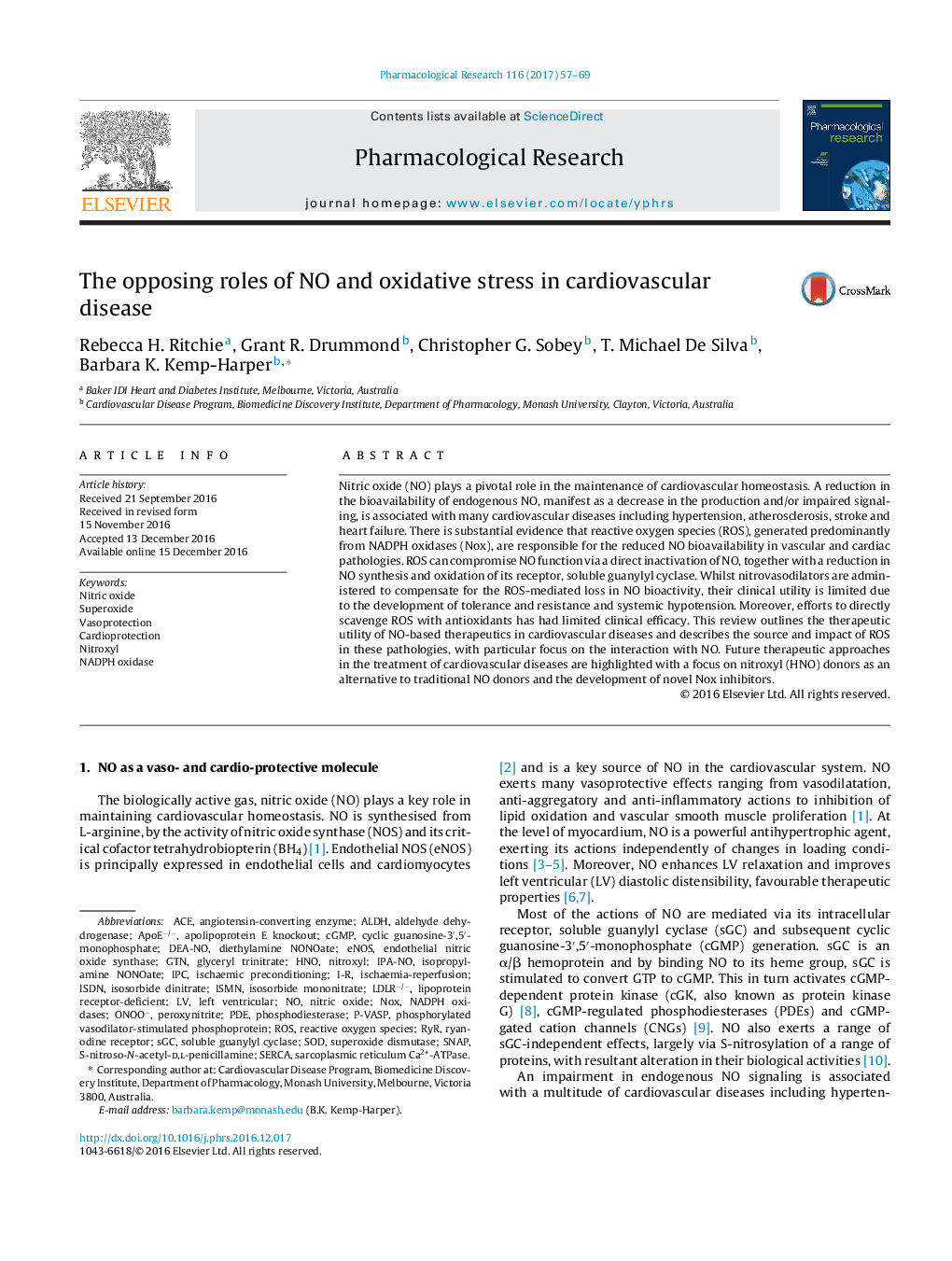| Article ID | Journal | Published Year | Pages | File Type |
|---|---|---|---|---|
| 5557375 | Pharmacological Research | 2017 | 13 Pages |
Nitric oxide (NO) plays a pivotal role in the maintenance of cardiovascular homeostasis. A reduction in the bioavailability of endogenous NO, manifest as a decrease in the production and/or impaired signaling, is associated with many cardiovascular diseases including hypertension, atherosclerosis, stroke and heart failure. There is substantial evidence that reactive oxygen species (ROS), generated predominantly from NADPH oxidases (Nox), are responsible for the reduced NO bioavailability in vascular and cardiac pathologies. ROS can compromise NO function via a direct inactivation of NO, together with a reduction in NO synthesis and oxidation of its receptor, soluble guanylyl cyclase. Whilst nitrovasodilators are administered to compensate for the ROS-mediated loss in NO bioactivity, their clinical utility is limited due to the development of tolerance and resistance and systemic hypotension. Moreover, efforts to directly scavenge ROS with antioxidants has had limited clinical efficacy. This review outlines the therapeutic utility of NO-based therapeutics in cardiovascular diseases and describes the source and impact of ROS in these pathologies, with particular focus on the interaction with NO. Future therapeutic approaches in the treatment of cardiovascular diseases are highlighted with a focus on nitroxyl (HNO) donors as an alternative to traditional NO donors and the development of novel Nox inhibitors.
Graphical abstractDownload high-res image (148KB)Download full-size image
